Outriders is a smart looter shooter for people who may not have time for a looter shooter
Hands-on with People Can Fly's cross-gen co-op shooter
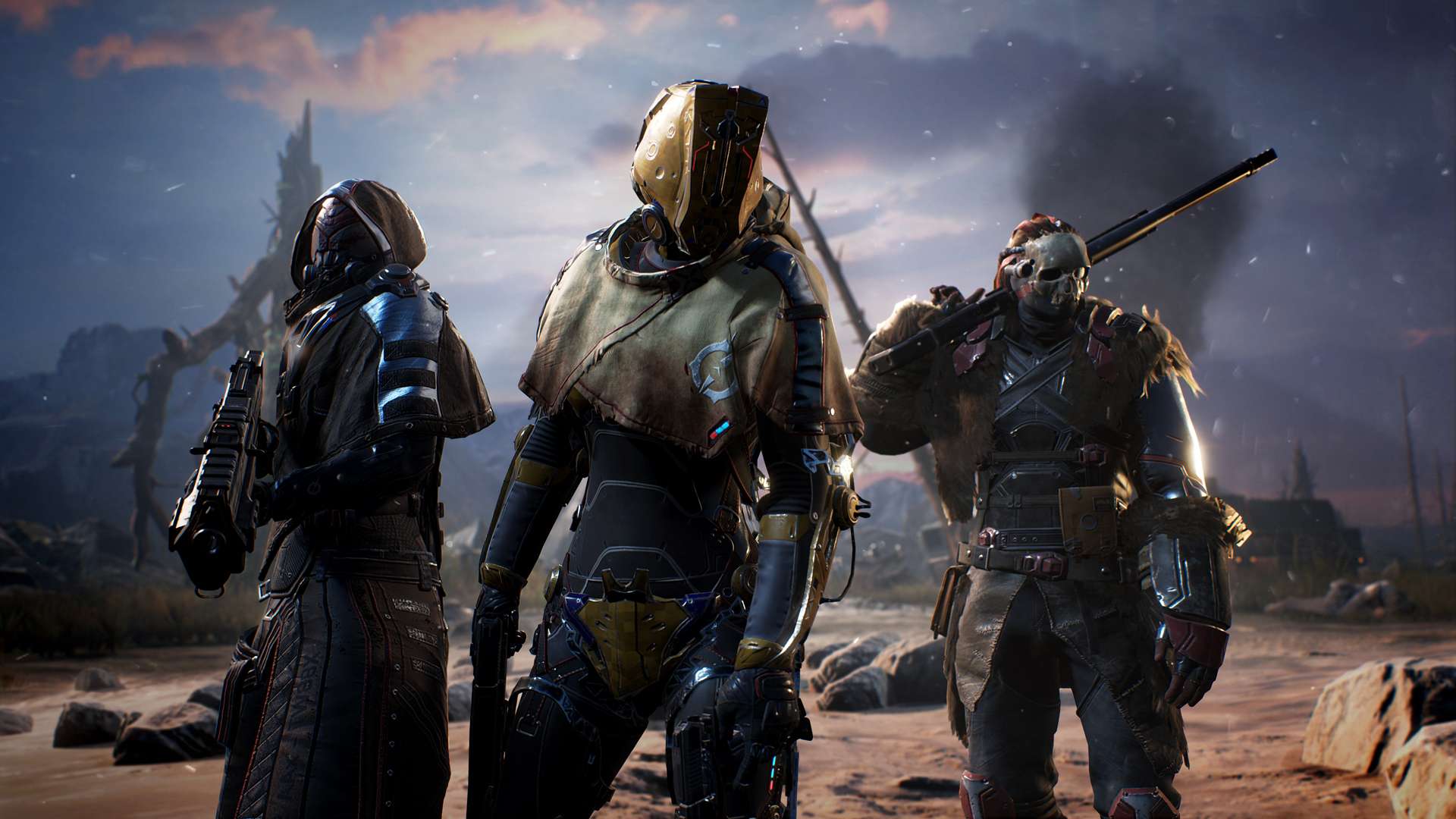
Two kinds of people are going to play Outriders, the upcoming cross-gen, co-op looter shooter from People Can Fly, and the studio is preparing for both of them. Some people are like me, seasoned looters of shooters who will obsess over the best skill combinations and gear. Others will treat it as a traditional campaign-led shooter that they can play with friends and which happens to have loot in it. We've yet to see a shooter like this that can totally satisfy both parties, but based on my hands-on demo with the game and a chat with the studio, Outriders has done a pretty good job of meeting them in the middle. Not by going wide and offering something for everyone, but by zeroing in on a specific experience that you can approach in different ways.
My demo opens with a linear mission that plays like a shooting gallery on a sparse mountainside, which is exactly what I need to come to grips with the combat. Outriders is a third-person cover-based shooter, and I'm a Technomancer, the fourth and final class of Altered. A glance at my skill tree shows that I specialize in crowd control, turrets, and burst damage abilities like a missile barrage. I can freeze enemies in place and make them more vulnerable to weapon damage, set up a perimeter of turrets, blow groups apart with strategically placed AoE attacks, support my teammates with well-timed buffs, and I… I have a lot of skills, don't I?
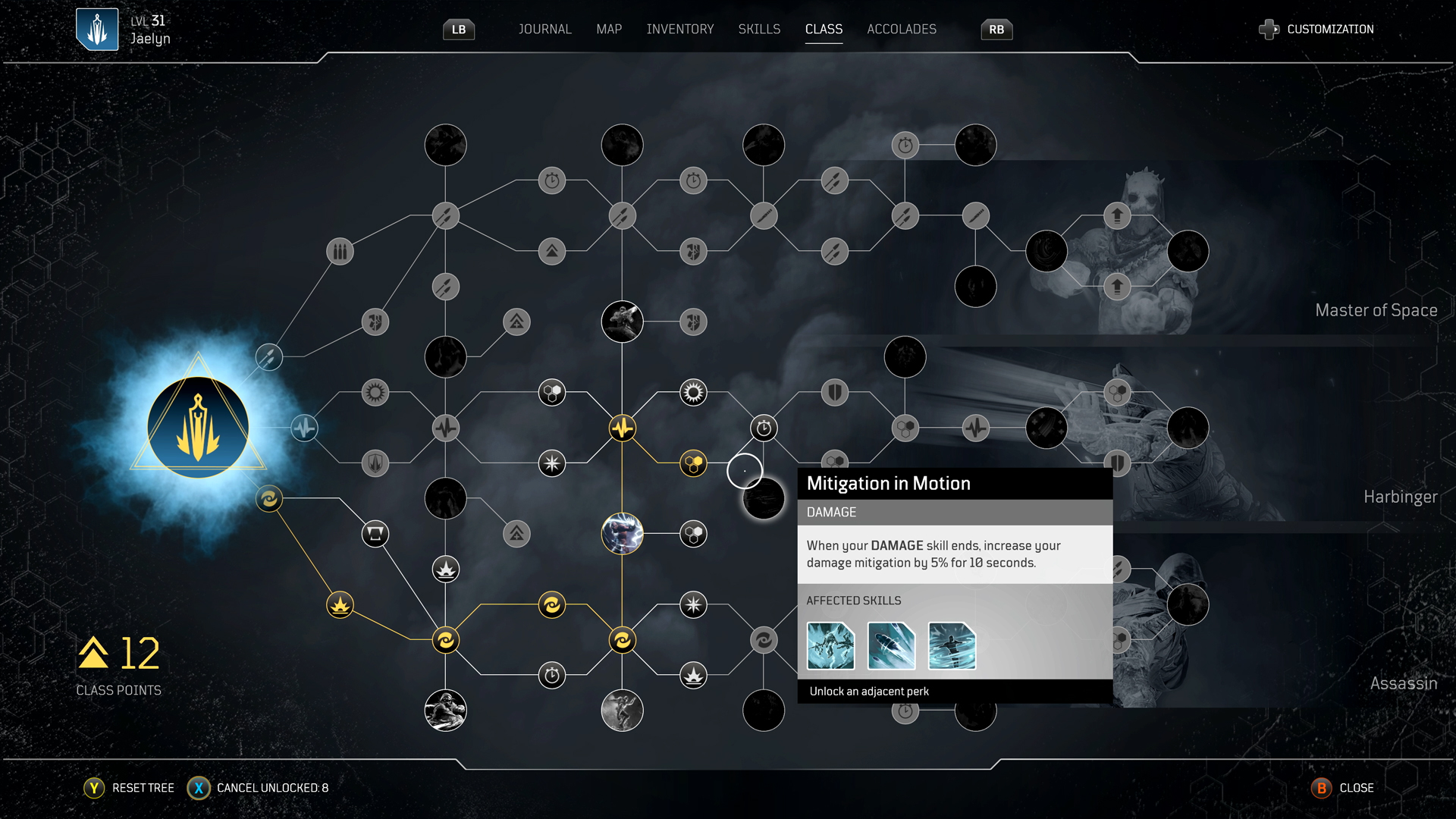
Immediately, the variety and structure of the skill tree in Outriders gets my looter shooter lizard brain going. People Can Fly says it looked to Diablo games for inspiration, but the skill tree reminds me more of Path of Exile at first blush, at least in the way it's built (it's way smaller, don't worry). There are three branches, and as you invest in a branch, you get access to stronger and more unique skills. Several skill nodes let you choose between offensive and defensive abilities, and there are connections between the branches further along. I invest in the middle branch to build up my crowd control toolkit, then jump to the second half of the top branch to splash in some burst damage. Thankfully, I can reallocate my skill points whenever I want. All of this makes it easy to experiment with and combine different branches, and it means I don't have to spend a lot of points on skills that I don't want just to unlock better ones.
The Technomancer experience
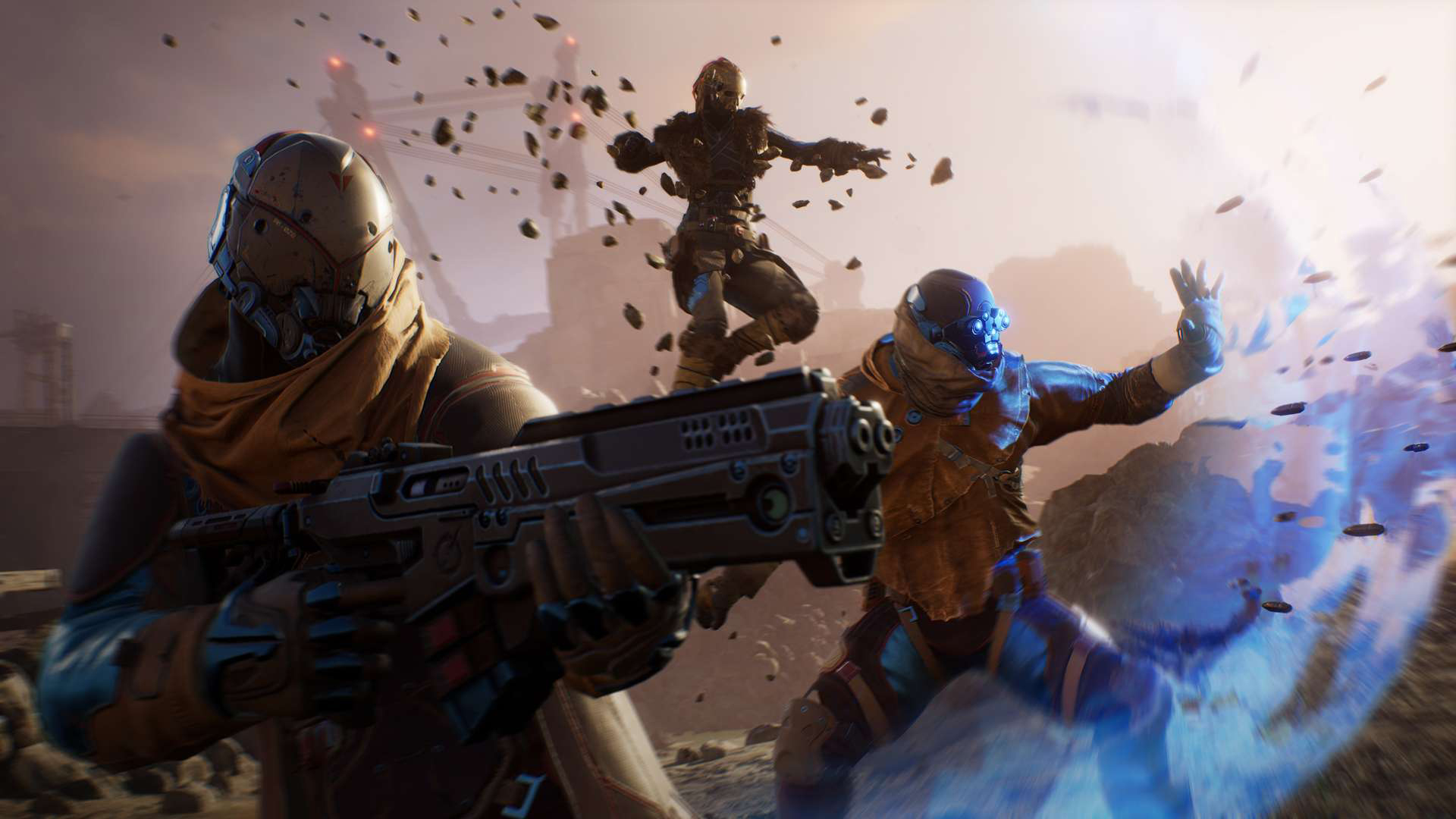
I decide to embrace the engineering side of the Technomancer and invest heavily in turrets, freezes, and debuffs. I can equip three abilities, each with their own cooldown. I've got an acid turret on a short cooldown, an ice turret on a longer cooldown, and a massive AoE that freezes everything around me. By investing in turret health and cooldown reduction, I'm able to keep my turrets up pretty much all the time. I throw in the big freeze because I figure I'm going to want an "oh crap" button in case enemies break through my turrets, and everything I freeze is also weakened, so it fits the saboteur vibe I've got going on.
To round things out, I strap on an assault rifle that synergizes with my acid and a sniper rifle that works with all the freezing I'm dishing out. Icicles make for easy headshots, after all. As the crowds of bad guys get denser, I find myself leaning more and more on my assault rifle because dealing damage with it also heals me. Each class of Altered has its own way of healing, and all of them encourage aggressive play, which I like because cover-based shooters run the risk of getting bogged down behind walls. This healing system means you can't really play passively.
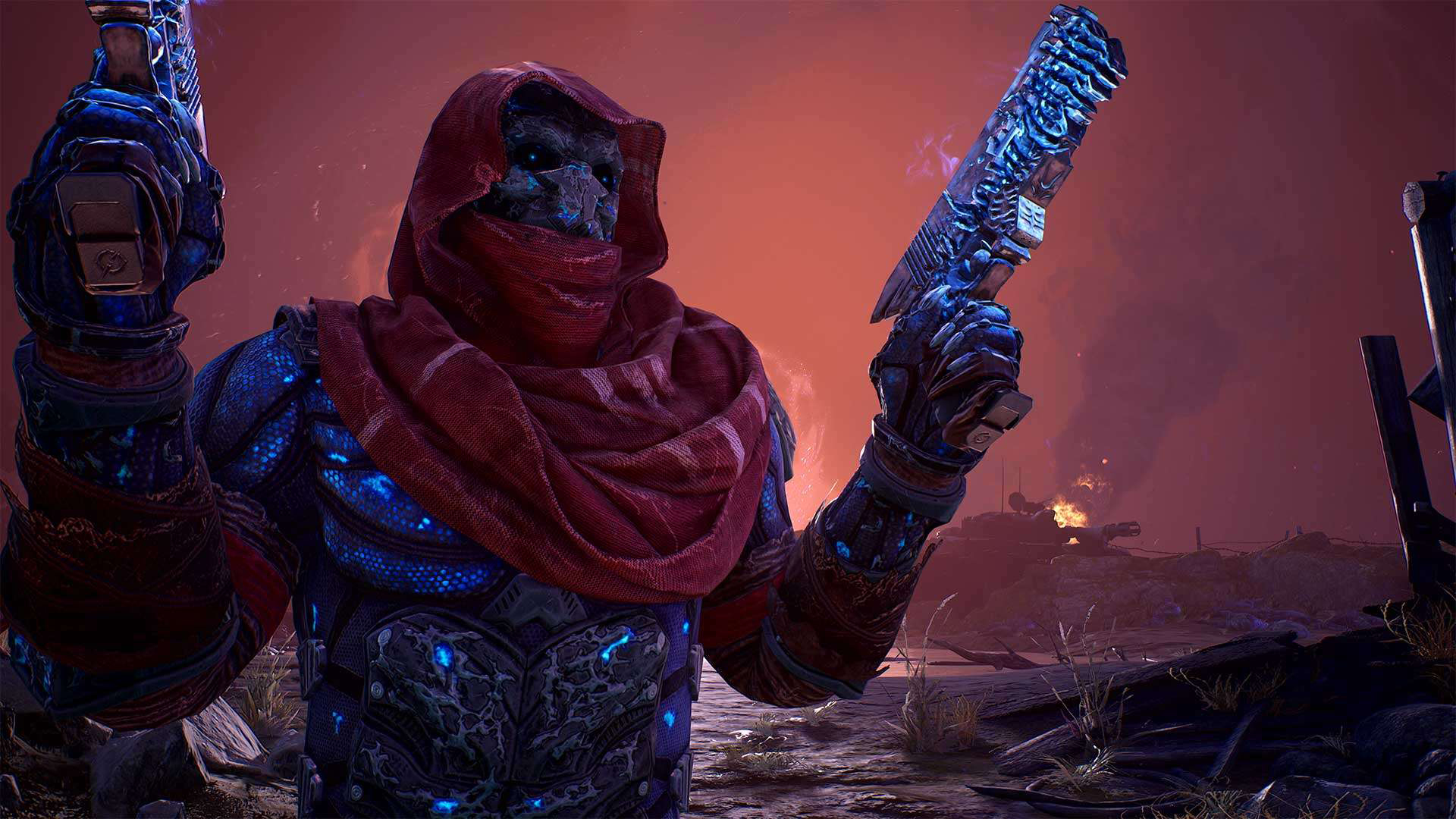
It feels pretty good to pop heads with my sniper, but my assault rifle has way more recoil than I'm used to, especially for a PC shooter, so I have to be more careful with my bursts. For the record, I played Outriders through Parsec by essentially borrowing a remote PC, so I did encounter some minor latency issues that made it difficult to evaluate the game's gunplay. At best, it felt like I was half a second behind the rest of the universe, and during bad lag spikes, it was like playing with three sheets of plastic wrap over my monitor. That's not a point against the game itself, but it did make it difficult to get an accurate feel for some things.
That said, I can say a few things with certainty. One, the cover system felt a little clunky. I got hung up on pillars and walls often enough that I came to prefer moving around more than taking cover, though some enemies made this difficult. And two, the guns in Outriders feel a lot like the guns in The Division 2, which is to say they feel… fine. Actually firing them isn't terribly exciting in a tactile way, but the destruction they cause is satisfying. My benchmark for looter shooter gunplay is always Destiny 2, which isn't a totally fair comparison because first-person shooters can give guns more personality. People Can Fly's work on the Gears of War series is probably a more useful reference, and I'd say the guns are about on par with the ones in those games in terms of impact.
Sign up to the GamesRadar+ Newsletter
Weekly digests, tales from the communities you love, and more
Gear that matters

Of course, as an Altered, you do more than just shoot guys. Most abilities in the game have fairly short cooldowns, so you can regularly weave them into combat to spice things up. I liked the flavor of using turrets, but I think I'll go for more active, damage-dealing abilities the next time I play Outriders, because they can add a lot to engagements. And as I learned the hard way after getting pummeled by some heavies in a wide-open mission straight out of Battlefield, hard-hitting abilities are also a necessity for armored targets. These feel like textbook bullet sponges at first, but as I learned in my post-demo interview, they're designed to force you to manage abilities effectively. A single powerful cooldown will deal with most of them even on higher difficulties. I missed the first time around by going full turrets, but I do like this system. Your gear is split between weapon and ability power, and this not only gives Outriders two ways to balance enemies, it also gives you more to consider when building your character.
Outriders is also a looter shooter, after all, and the depth of its gear really elevates its combat. My demo account was loaded with Epic-grade gear which has two modifiers apiece, and these modifiers can do way more than just increase your damage by some percentage. I found a pair of boots that turn my acid turret into a second freeze turret, and a chest piece that adds a freeze effect to that missile barrage I mentioned. I also got some legs that changed my dodge roll into an honest-to-god teleport but with lightning. These are fun, genuinely game-changing modifiers that I could build my entire character around.
It's at this point that the crafting system in Outriders – which I'd initially found a bit off-putting because me and multiple in-game currencies get along like sharks and seal pups (and I'm the seal pup) – starts to make sense. For once, I'm glad a game has crafting, because I want to add these cool modifiers to other gear. And I can, as lead game designer Piotr Nowakowski explains.
An optional deep end
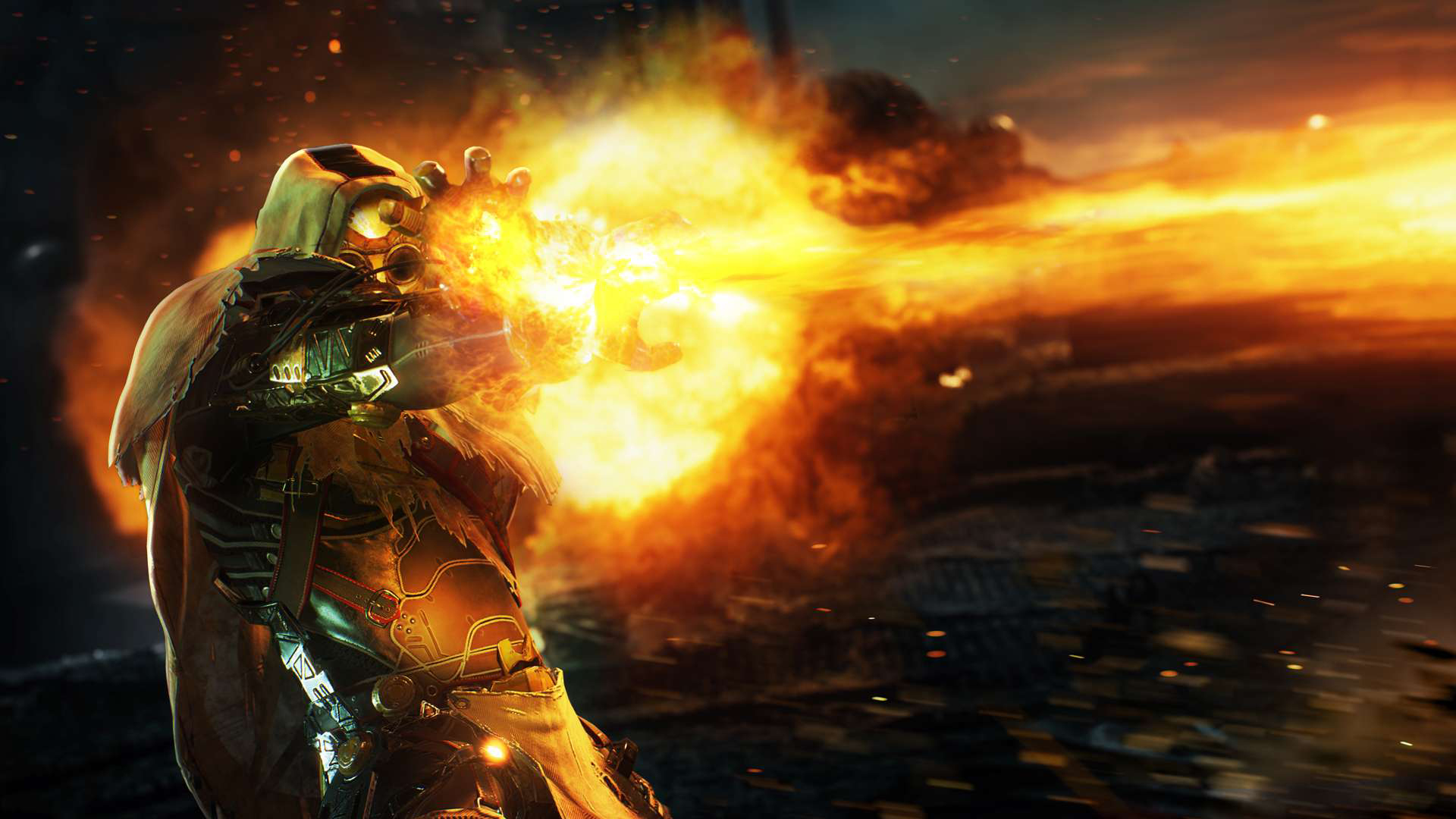
"The restrictions are simple: when you have two mods on an item, you can exchange one of them," Nowakowski says. "You're still looking for an item that has a mod that fits you, and the second one you can replace through crafting. You also can't swap weapons between weapons and armor. And you're looking for items because when you scrap them, you receive that mod and learn it, so then you can use it on another item. So there are restrictions, but still a lot of combinations with slots and how you use them."
I'm looking forward to mixing and matching my favorite modifiers because they honestly feel like a second skill tree, but this is by no means required. If you just want to play through Outriders and use new gear as you acquire it through the campaign, you can. Crafting is there for people who want to maximize their builds and raise their World Tier – basically a blanket difficulty level that you can increase by strengthening your character and playing well – but it won't be for everyone. Likewise, you won't need to do every side mission to advance the campaign.
We will see what people want to do. I think we have a lot of content for both groups.
Bartosz Kmita
"We have different audiences," creative director Bartosz Kmita says. "I can imagine there will be a big group that will not even pay attention to the loot. They will play only for the story and for the adventure, and they will treat it more as an RPG. They'd like to know more about the story and the world, and when they satisfy that, they will probably stop playing … We're not necessarily encouraging this because we hope that people will try and dig into the systems and the discoveries. We think it's super awesome and is the bread and butter of our game, but we understand that there are some people who are only there for the adventure.
"But we know there is a second group that is more about the loot aspect, more about the items, looking for character builds and challenges. This group, you're right, probably a lot of them will play this like a Borderlands. But we know there's a kind of player who will play these games for hundreds and hundreds of hours just to raise parameters by 1%. We know that is more for the hardcore group, so this is not a super huge audience. But there will be these kinds of players. Of course, I dream about this holy grail of player who will merge these two things together. That's my little hope. We will see what people want to do. I think we have a lot of content for both groups."
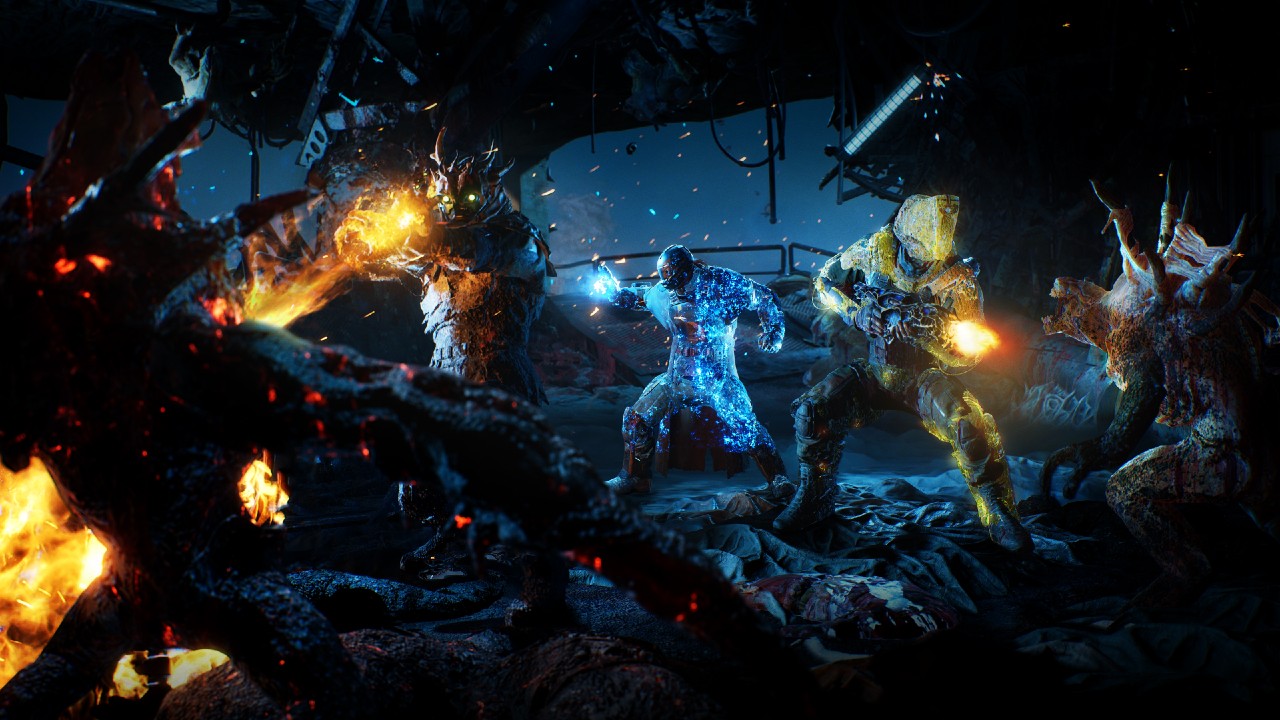
I was attracted to Outriders because of what it's not. It's not a game as a service designed to be played, updated, and monetized for years. It doesn't have PvP, which means it can go hog-wild with cool abilities (like lightning teleports), and it's not even pretending to be MMO-adjacent. After Destiny, Anthem, and The Division, I'm extremely open to a game like that. Even without all that baggage, Outriders is still a looter shooter with fascinating abilities and guns that are fun to use. Likewise, Kmita says that even without service-style monetization, People Can Fly won't just "abandon the game after it's out." And after trying the game, even with the remote play difficulties, I am interested in giving it a proper playthrough. It feels like a grittier, third-person, three-player Borderlands, and that's right up my alley.

Austin has been a game journalist for 12 years, having freelanced for the likes of PC Gamer, Eurogamer, IGN, Sports Illustrated, and more while finishing his journalism degree. He's been with GamesRadar+ since 2019. They've yet to realize his position is a cover for his career-spanning Destiny column, and he's kept the ruse going with a lot of news and the occasional feature, all while playing as many roguelikes as possible.


